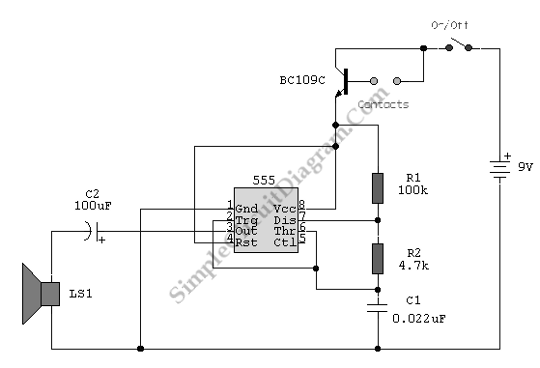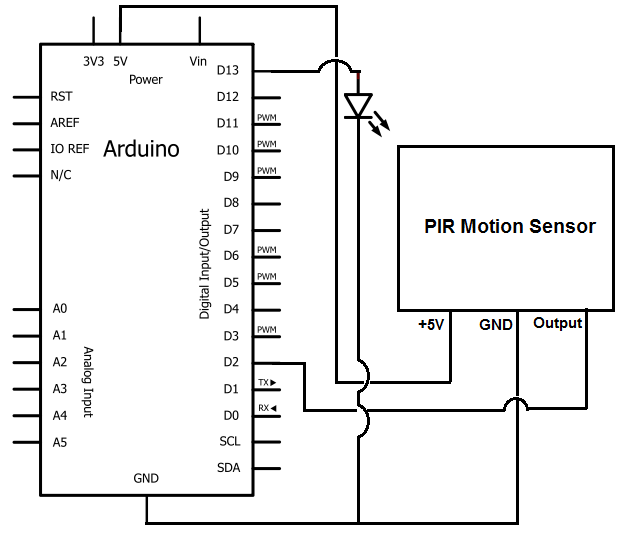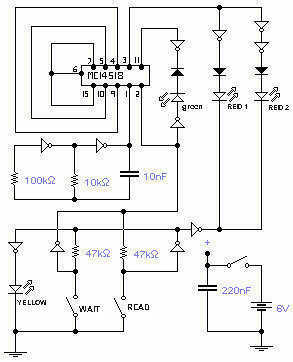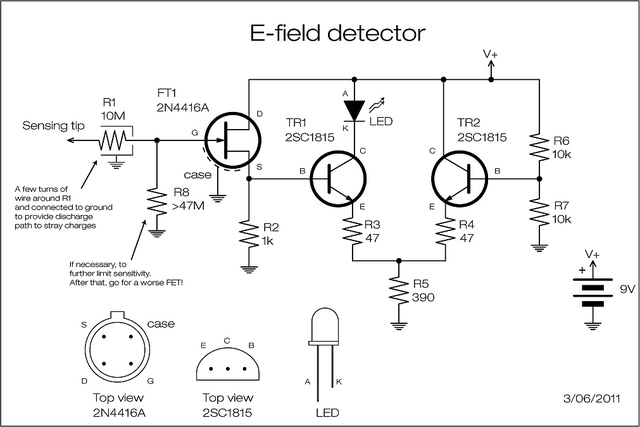
RF Bug detector
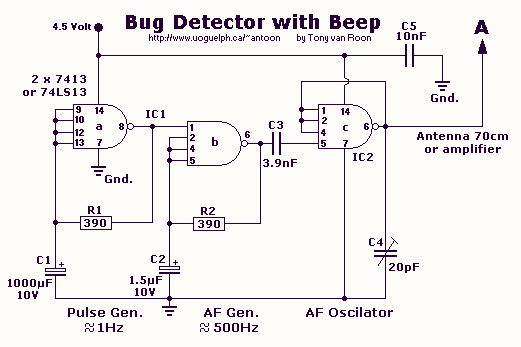
This circuit is not open for discussion. Although working perfectly, it was experimental. I will answer no emails in regards to this circuit. If you are looking for a more serious and reliable bug detector, go to the Countersurveillance Monitor article on the Circuits Page.
The provided text indicates that the circuit in question is experimental and not intended for further discussion or inquiries. As such, it is important to recognize that experimental circuits may not adhere to standard practices or may lack comprehensive documentation. The mention of a "Countersurveillance Monitor" suggests an alternative solution that is deemed more reliable for bug detection purposes.
In general, a bug detector circuit typically employs RF (radio frequency) detection techniques to identify the presence of unauthorized transmitting devices. Such circuits may include components such as RF amplifiers, frequency mixers, and demodulators to process incoming signals. The output can be visualized using an LED indicator or an audio alert to signify the detection of specific frequencies associated with bugging devices.
For those seeking a more robust design, the Countersurveillance Monitor referenced in the text likely incorporates advanced features such as adjustable sensitivity, frequency scanning capabilities, and possibly digital signal processing (DSP) techniques to filter out noise and enhance detection accuracy. This would provide users with a more comprehensive tool for identifying potential surveillance threats in various environments.
In conclusion, while the experimental circuit is acknowledged to function well, it is advisable to refer to established designs or commercially available products for reliable bug detection.This circuit is not open for discussion. Although working perfectly, it was experimental. I will answer no emails in regards to this circuit. If you are looking for a more serious and reliable bug detector, go to the Countersurveillance Monitor article on the Circuits Page. 🔗 External reference
The provided text indicates that the circuit in question is experimental and not intended for further discussion or inquiries. As such, it is important to recognize that experimental circuits may not adhere to standard practices or may lack comprehensive documentation. The mention of a "Countersurveillance Monitor" suggests an alternative solution that is deemed more reliable for bug detection purposes.
In general, a bug detector circuit typically employs RF (radio frequency) detection techniques to identify the presence of unauthorized transmitting devices. Such circuits may include components such as RF amplifiers, frequency mixers, and demodulators to process incoming signals. The output can be visualized using an LED indicator or an audio alert to signify the detection of specific frequencies associated with bugging devices.
For those seeking a more robust design, the Countersurveillance Monitor referenced in the text likely incorporates advanced features such as adjustable sensitivity, frequency scanning capabilities, and possibly digital signal processing (DSP) techniques to filter out noise and enhance detection accuracy. This would provide users with a more comprehensive tool for identifying potential surveillance threats in various environments.
In conclusion, while the experimental circuit is acknowledged to function well, it is advisable to refer to established designs or commercially available products for reliable bug detection.This circuit is not open for discussion. Although working perfectly, it was experimental. I will answer no emails in regards to this circuit. If you are looking for a more serious and reliable bug detector, go to the Countersurveillance Monitor article on the Circuits Page. 🔗 External reference
